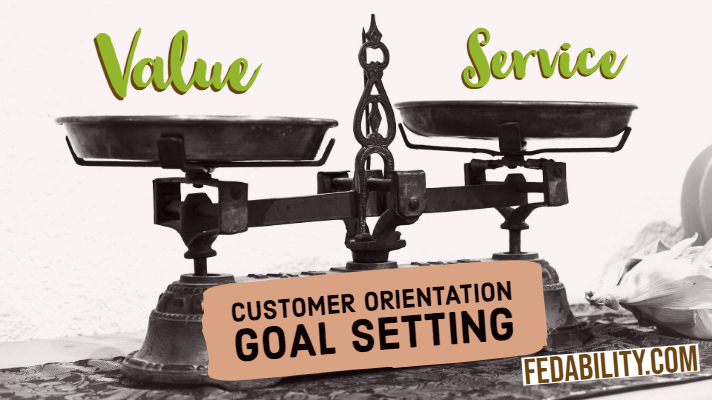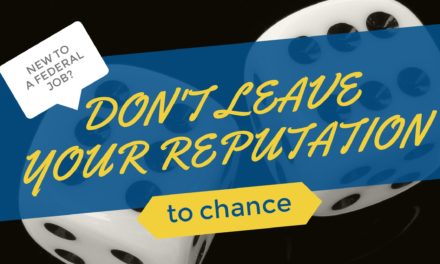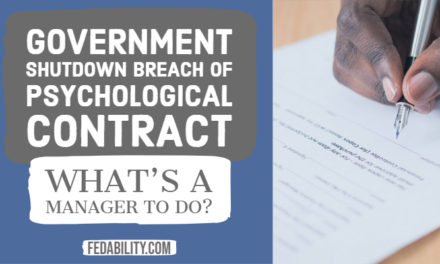If you work in the government, you may have noticed an increase in the focus on customer service goals. What you may not have realized is this is in part due to customer service as a focus area in the President’s Management Agenda (PMA). As these goals begin to be implemented, I encourage you to think broader in your goal setting. To think about how to foster a customer orientation with underpinnings of both service and value to the customer.
If you are unfamiliar with customer service goals, it may seem a matter of semantics to differentiate between customer service, customer value, and customer orientation. In this post, however, I cover the differences in terminology. In addition, I will offer examples of how those goals may differ. And, in doing so, I hope to convince you that it is worthwhile to think more broadly about how we interact with our customers in the government.
Distinguishing between customer orientation, service, and value
In a prior post, I talked about how we need to shift from a focus on customer service. Instead, we need to focus on customer value with the presumed bi-product (i.e., positive unintended consequences) of customer services.
I defined customer value as the benefit (perceived or real) that a customer receives relative to the alternatives or the costs associated. Conversely, customer service is defined as the support offered (before, during, and after purchase or use of product) that helps them have an enjoyable, easy, or positive experience with you.
What is tough about convincing someone in the government that customer value is important. This is because it rests on the premise that the ‘customer’ has an alternative. However, for most of the services the government provides – there is no competitor.
Customer orientation is a focus on helping customer meet their long-term needs and interests of a customer while clarifying the value that service provides to the customer.
As you can see, service and value goals must be used in tandem to support a broader customer orientation.
Setting customer goals: service, value, and orientation
In last week’s post, I asked you to consider the following questions.
- What is the benefit of working with you or your team versus some other person or team?
- What problems do your customers have related to whatever service you provide?
- Is there unique knowledge or skill within your team have that could be used to improve whatever service your provide?
Using the answers to those questions, you can begin thinking through activities and goals.
In the following section, I offer a few examples of how you might set a trifecta of customer goals. In doing so, you’ll notice I answered some of the above questions. Using those answers, I then created a goal for customer service, value, and orientation.
Example 1. The unique knowledge of a training team and the benefits of that knowledge
The benefit of working with my training team is that we know which vendors offer better classes. Using this knowledge, we can provide better recommendations to our customer.
Customer service goal: Increase number of employees who seek help by 12%.
Customer value goals: Identification of at least 5 new vendors annually. Frequency of in-class evaluations of instructional quality will be increased by 7% per quarter.
Customer orientation goal: Increase the number of supervisors who are able to create multi-year learning plans by 5%. These plans will be based on their understanding of the performance gaps they observe and the skills that will be important in the near future.
Example 2: The procurement office receives complaints regarding the performance of contractors.
My team supports the agency in creating and releasing contracts to acquire staffing support for a variety of short and long term projects. As a result, we have a view of all the contracts across the office. We can use this insight to recommend what makes a contract more or less successful.
Customer service goal: Reduce customer reports of poor contractor performance by 15%.
Customer value goals: Add 5 classes or job aids per quarter to help customers manage contractor performance. Check in with a sample of 3% of customers on contractor performance.
Customer orientation goal: Meet with 25% of all project managers to gather examples of good and bad performance by contractors. Identify themes and develop a plan to assist project managers in writing effective statements of work. This would include measurable performance metrics.
Summary take-aways of customer goal setting
Take away 1: Customer service is not just doing what the customer asks for. In fact, a prior post goes into why customer service is not about being a doormat. If you go back to the customer service goals above, notice that none of them says ‘do whatever it takes to make them smile’.
Take away 2: The key to good goal setting is ensuring that they are measurable. However, measurable does not mean they are easy to measure. And, being hard to measure is not a good reason for not trying to measure them.
Take away 3: Of the three types of customer goals (value, service, orientation), the customer service goal appears to be at greatest risk of the cobra effect. That is, they are at greatest risk of having unintended consequences of promoting undesired behaviors.
For instance, one could increase the number of people who request help for training by removing information (or not providing it) from the office’s websites. Similarly, one could reduce the number of reports of poor contractor performance by increasing the administrative burden with more forms to complete.
As a result, I would recommend using at minimum a customer value or customer orientation goal in conjunction with a customer service goal.
If you haven’t heard of the cobra effect, here’s a quick video summarizing it for you.
If you found this post interesting, you might also like our article that asks you to consider how you behave as the customer.





